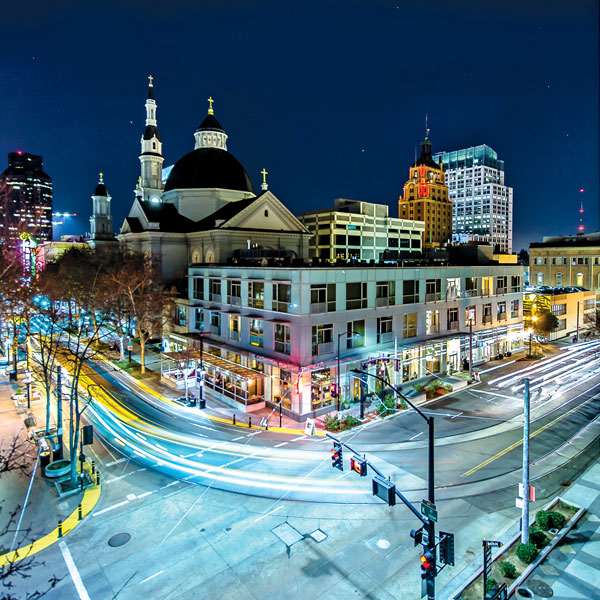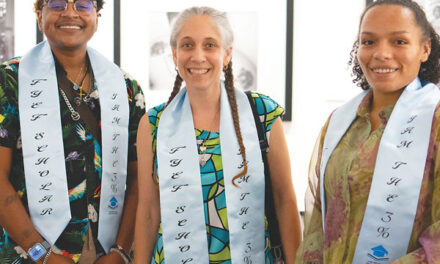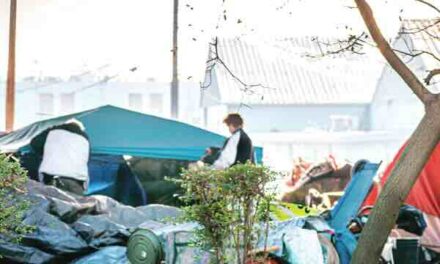With March primary elections in full force, Sacramento needs a plan to repair the damage from recent years. Problems include homelessness, crime and the effects of destructive COVID-19 lockdown policies. We need solutions.
Before the pandemic, the city was on its way to becoming a sought-after location. Between 2016 and 2018, I published two editions of our Inside Sacramento book highlighting the most interesting restaurants and shops in America’s farm-to-fork capital. The books were a hit. I was optimistic.
Today that optimism is gone. City life is worse, not better. A national survey of major cities ranks Sacramento as No. 2 in growth of homeless populations. From 2020 to 2023 Sacramento’s unhoused numbers exploded by 68%.

Only Long Beach outranks our city with a 69% increase. Los Angeles is up 12%, Oakland and Seattle both up 20%. San Francisco decreased its homeless population by 7%. You can guess where they went.
Our commercial real estate market struggles. Crime rates are rising. Enforcement of existing laws is piecemeal. Small businesses fight to stay afloat. Blight consumes many Downtown streets.
Some of this is attributable to draconian pandemic lockdown policies in California. States and cities that reopened sooner enjoyed faster recoveries.
When I interviewed the four main mayoral candidates, I asked whether they would support a mayoral commission to promote a Downtown renaissance.
History buffs recall the Marshall Plan after World War II. The Marshall Plan was an American initiative to aid to Western Europe in 1948. The U.S. transferred $13.3 billion ($173 billion in 2023) in economic recovery programs.
The goals were to rebuild war-torn regions, remove trade barriers, modernize industry, improve prosperity and prevent the spread of communism.
The plan worked. Here’s why: The best and brightest people were brought together to solve an international crisis. The program’s leader, Gen. George Marshall, received the Nobel Peace Prize in 1953.
I’m proposing we find a Gen. Marshall figure to lead our city in a renaissance.
The plan might be best built around a civic committee with more autonomy. A less attractive option is a city-led commission.
Members must include Downtown interests—commercial property owners and developers, and state workplace policymakers from the Department of General Services. Small business interests and people who live Downtown need to be at the table. Also included should be business improvement districts. And the District Attorney’s office and Visit Sacramento.
As state Assemblymember and mayoral candidate Kevin McCarty tells me, “City governments can’t do everything. We can’t control interest rates, can’t control labor costs, and don’t control the cost of food and materials, steel and wood. But we can control whether to incentivize outside dining, the music scene, tourism. We can celebrate our Downtown and look for ways to evolve. I absolutely support the idea.”
Another mayoral candidate, former City Council member Steve Hansen, says, “The central city isn’t just a playground for people to come and go from. It’s the greatest producer of revenue for our city. If we allow it to fall apart, if we don’t have a plan for the next economy, then the city will likely go bankrupt. Investors across the country will make a decision on this region based on the central city’s look, feel and quality of life. It determines our city’s financial health, our psychological health and our morale.”
Former state Senator and mayoral hopeful Richard Pan notes, “With 40,000 state employees being permanently furloughed, that created a vacuum. How do you get them back? They need to feel safe coming back. I would strongly encourage them to come back, including city employees.”
Mayoral candidate Flojaune Cofer agrees with the idea of a commission, but adds the city also needs an LGBTQ commission. She completely misses the point.
Please keep the idea of a Downtown renaissance leadership group in mind when you vote for mayor in the March primary. The new mayor should play a leadership role in appointing the best people and creating the best structure for recovery.
The job requires wisdom to keep the committee small, focused and on track.
For everyone’s sake, can local media, academic, civic and business leaders please discuss this idea? Goals are rarely met without a plan on how to get there.
Cecily Hastings can be reached at publisher@insidepublications.com. Follow us on Facebook and on Instagram: @insidesacramento.















